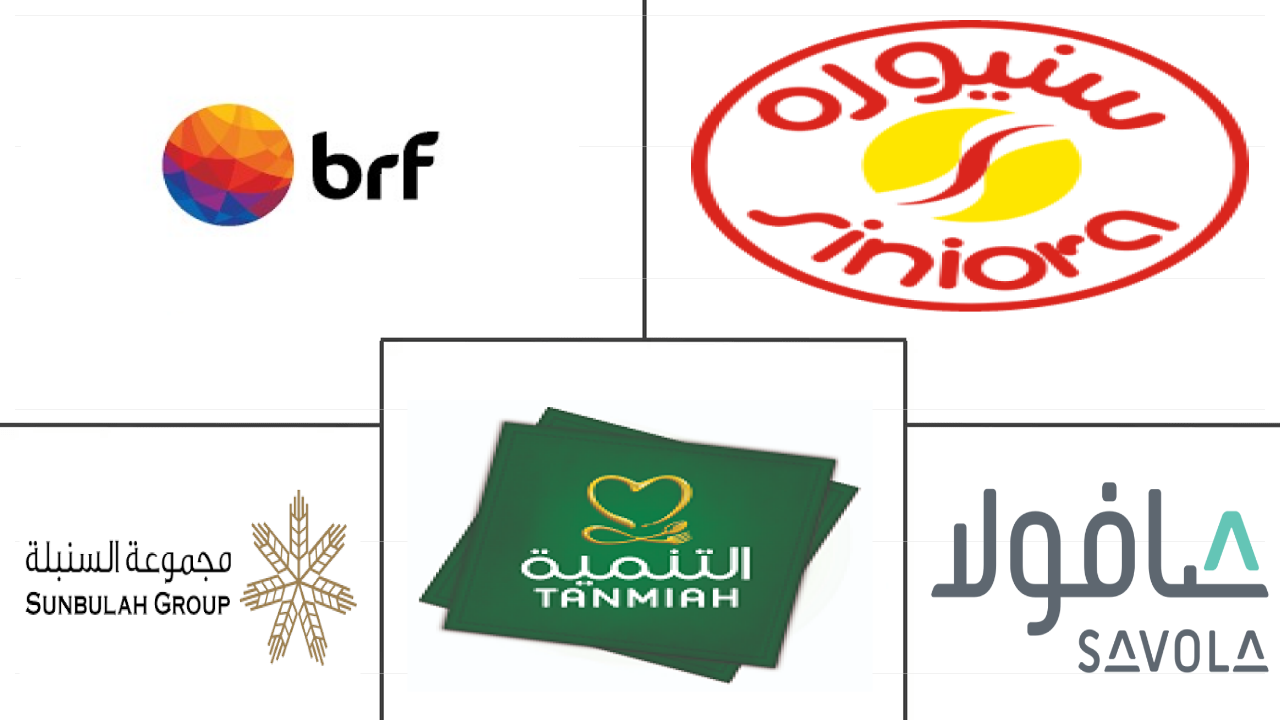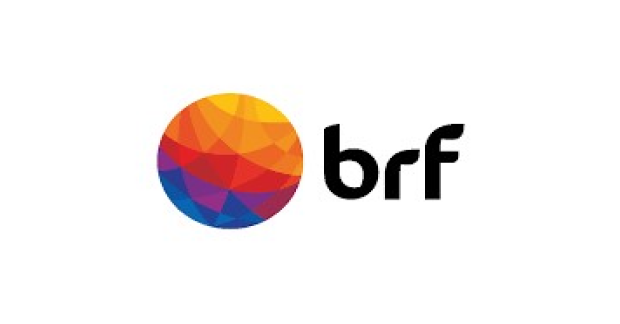Market Size of middle east edible meat Industry
|
|
Study Period | 2017 - 2029 |
|
|
Market Size (2024) | USD 29.93 Billion |
|
|
Market Size (2029) | USD 33.20 Billion |
|
|
Largest Share by Type | Poultry |
|
|
CAGR (2024 - 2029) | 2.09 % |
|
|
Largest Share by Country | Saudi Arabia |
Major Players |
||

|
||
|
*Disclaimer: Major Players sorted in no particular order |
Middle East Edible Meat Market Analysis
The Middle East Edible Meat Market size is estimated at 29.93 billion USD in 2024, and is expected to reach 33.20 billion USD by 2029, growing at a CAGR of 2.09% during the forecast period (2024-2029).
29.93 Billion
Market Size in 2024 (USD)
33.20 Billion
Market Size in 2029 (USD)
4.44 %
CAGR (2017-2023)
2.09 %
CAGR (2024-2029)
Largest Market by Type
53.28 %
value share, Poultry, 2023
Product consistency, a surge in regional production, and its higher protein/lower fat content are some of the major factors influencing the region's poultry consumption.
Largest Market by Country
21.32 %
value share, Saudi Arabia, 2023
Poultry and beef are Saudi Arabia's choice of meat. The country's regulatory bodies are encouraging local producers to boost meat production to cater to the surging demand.
Fastest-growing Market by Type
2.41 %
Projected CAGR, Beef, 2024-2029
The growing influence of Western diets and the increased presence of international cuisines and restaurants serving beef-based dishes in the region have led to the demand.
Fastest-growing Market by Country
2.07 %
Projected CAGR, Oman, 2024-2029
The surging demand, influenced by constant investments and government support to boost the local production of edible meat, may drive the Omani market in the future.
Leading Market Player
1.40 %
market share, BRF S.A., 2022

Other than the extensive product portfolio incorporating all forms and types of edible meat, the company's broad consumer reach makes it a leading player in the market.
High ex-pat population in the region drives the demand for various meat products
- Poultry is the most consumed meat type in the Middle East. The sales of poultry meat in the region rose by 13.96% in value from 2019 to 2022. Among all poultry birds, chicken meat dominated in the region compared to turkey, duck, and goose. Moreover, several countries are investing in improving poultry meat production. Pork is banned in the majority of Middle Eastern countries under Islamic dietary law. However, consuming pork is not illegal for non-Muslims in the UAE and Bahrain. These two countries import pork, which is sold in authorized foodservice establishments and retail outlets.
- Apart from other meat, beef is anticipated to register the fastest growth during the forecast period, with a CAGR of 2.36% by value. Bahrain has the highest per capita beef consumption of 15.80 kg in 2023. The country relies on beef imports from New Zealand, Pakistan, and the United Arab Emirates. Most fresh meat cuts available through online channels are New Zealand's beef sirloin, topside steak, and silverside steak. The country has also seen an increase in the ex-pat population from Western and Asian nations over the last two decades, leading to a more diverse range of gastronomic preferences, including food items like hamburgers. Similarly, among red meat, consumption is primarily dominated by beef due to the religious affiliations of Bahrain's population.
- By country, Saudi Arabia currently has the highest consumption of edible meat, with a share of 20.42%, by value, of the Middle Eastern edible meat market. The country is increasing its meat production facilities to gain self-sufficiency in meat production. For instance, Saudi Arabia plans to invest USD 5 billion to boost poultry production as the Kingdom aims to achieve a poultry meat self-sufficiency rate of 80% by 2025.
Government support and high meat consumption are boosting the sales of edible meat
- Saudi Arabia held the largest share of the market at 20.55% in 2022. To reduce the dependency on imports, Saudi Arabia launched the National Industrial Development and Logistics Program to boost edible meat production from 2020 to 2025. It aims to reinforce food security by establishing a regional food hub to ensure that local manufacturers meet all food needs. Owing to this, the livestock population reached 4.2 million heads in 2022.
- Bahrain observed a significant growth of 13.24% in sales value from 2019 to 2022 owing to the increased per capita consumption of edible meat, which reached over 93.1 kg per capita in 2022, a rise of 8.93 kg per capita from 2019. This was due to increased demand for foods like hamburgers and fried chicken as they became more popular with Bahraini consumers. The edible meat market is largely dominated by poultry, mainly due to the religious affiliation of Bahraini consumers.
- The demand for poultry is rising in the United Arab Emirates. It registered a growth of 6.92% by value from 2020 to 2022. Amid increasing global food prices, poultry remains a comparatively cheap source of animal protein in the UAE. A result of lower poultry prices, which were USD 2.6 per kg, the cheapest among all types of meat, and a surge in tourism increased the demand for poultry meat.
- Oman is the fastest-growing edible meat market in the Middle East, and it is expected to register a CAGR of 2.11% by value during the forecast period (2023-2029). Oman Investment Authority supported various edible meat projects in the country to increase its self-sufficiency and expand the market. These projects allowed the country to achieve meat self-sufficiency of 46% in 2021 from 37% in 2020. Major companies entered the local markets of the region to grow in the edible meat market.
Middle East Edible Meat Industry Segmentation Middle East Edible Meat Industry Segmentation
Beef, Mutton, Pork, Poultry are covered as segments by Type. Canned, Fresh / Chilled, Frozen, Processed are covered as segments by Form. Off-Trade, On-Trade are covered as segments by Distribution Channel. Bahrain, Kuwait, Oman, Qatar, Saudi Arabia, United Arab Emirates are covered as segments by Country.
- Poultry is the most consumed meat type in the Middle East. The sales of poultry meat in the region rose by 13.96% in value from 2019 to 2022. Among all poultry birds, chicken meat dominated in the region compared to turkey, duck, and goose. Moreover, several countries are investing in improving poultry meat production. Pork is banned in the majority of Middle Eastern countries under Islamic dietary law. However, consuming pork is not illegal for non-Muslims in the UAE and Bahrain. These two countries import pork, which is sold in authorized foodservice establishments and retail outlets.
- Apart from other meat, beef is anticipated to register the fastest growth during the forecast period, with a CAGR of 2.36% by value. Bahrain has the highest per capita beef consumption of 15.80 kg in 2023. The country relies on beef imports from New Zealand, Pakistan, and the United Arab Emirates. Most fresh meat cuts available through online channels are New Zealand's beef sirloin, topside steak, and silverside steak. The country has also seen an increase in the ex-pat population from Western and Asian nations over the last two decades, leading to a more diverse range of gastronomic preferences, including food items like hamburgers. Similarly, among red meat, consumption is primarily dominated by beef due to the religious affiliations of Bahrain's population.
- By country, Saudi Arabia currently has the highest consumption of edible meat, with a share of 20.42%, by value, of the Middle Eastern edible meat market. The country is increasing its meat production facilities to gain self-sufficiency in meat production. For instance, Saudi Arabia plans to invest USD 5 billion to boost poultry production as the Kingdom aims to achieve a poultry meat self-sufficiency rate of 80% by 2025.
| Type | |
| Beef | |
| Mutton | |
| Pork | |
| Poultry | |
| Other Meat |
| Form | |
| Canned | |
| Fresh / Chilled | |
| Frozen | |
| Processed |
| Distribution Channel | ||||||
| ||||||
| On-Trade |
| Country | |
| Bahrain | |
| Kuwait | |
| Oman | |
| Qatar | |
| Saudi Arabia | |
| United Arab Emirates | |
| Rest of Middle East |
Middle East Edible Meat Market Size Summary
The Middle East edible meat market is experiencing a steady growth trajectory, driven by increasing demand for various types of meat, particularly poultry and beef. Poultry remains the most consumed meat in the region, with chicken leading the preference over other poultry types like turkey, duck, and goose. The market is characterized by significant investments in poultry production to enhance self-sufficiency, especially in countries like Saudi Arabia, which aims to achieve a high self-sufficiency rate in poultry by 2025. Despite the religious restrictions on pork, it is still available for non-Muslims in countries like the UAE and Bahrain, where it is imported and sold in authorized outlets. Beef consumption is on the rise, with Bahrain showing the highest per capita consumption, supported by imports from countries like New Zealand and Pakistan. The region's market dynamics are further influenced by the expatriate population, which diversifies culinary preferences and boosts demand for various meat products.
The market landscape is fragmented, with major players like BRF S.A., Siniora Food Industries Company, Sunbulah Group, Tanmiah Food Company, and The Savola Group holding a modest share. Strategic partnerships and expansions, such as Tyson Foods' collaboration with Tanmiah and JBS's acquisitions in the MENA region, are enhancing market penetration and distribution capabilities. The Saudi Food and Drug Authority's extension of the shelf life for imported US beef is expected to benefit both importers and exporters by reducing transportation costs and increasing profitability. The region's reliance on imports for essential meat products, coupled with rising global food prices, is contributing to higher consumer spending on premium meat, particularly in affluent countries like the UAE and Saudi Arabia. As urbanization and tourism continue to rise, the demand for high-quality meat products is expected to grow, further shaping the market's future trajectory.
Middle East Edible Meat Market Size - Table of Contents
-
1. MARKET SEGMENTATION (includes market size in Value in USD, Forecasts up to 2029 and analysis of growth prospects)
-
1.1 Type
-
1.1.1 Beef
-
1.1.2 Mutton
-
1.1.3 Pork
-
1.1.4 Poultry
-
1.1.5 Other Meat
-
-
1.2 Form
-
1.2.1 Canned
-
1.2.2 Fresh / Chilled
-
1.2.3 Frozen
-
1.2.4 Processed
-
-
1.3 Distribution Channel
-
1.3.1 Off-Trade
-
1.3.1.1 Convenience Stores
-
1.3.1.2 Online Channel
-
1.3.1.3 Supermarkets and Hypermarkets
-
1.3.1.4 Others
-
-
1.3.2 On-Trade
-
-
1.4 Country
-
1.4.1 Bahrain
-
1.4.2 Kuwait
-
1.4.3 Oman
-
1.4.4 Qatar
-
1.4.5 Saudi Arabia
-
1.4.6 United Arab Emirates
-
1.4.7 Rest of Middle East
-
-
Middle East Edible Meat Market Size FAQs
How big is the Middle East Edible Meat Market?
The Middle East Edible Meat Market size is expected to reach USD 29.93 billion in 2024 and grow at a CAGR of 2.09% to reach USD 33.20 billion by 2029.
What is the current Middle East Edible Meat Market size?
In 2024, the Middle East Edible Meat Market size is expected to reach USD 29.93 billion.

